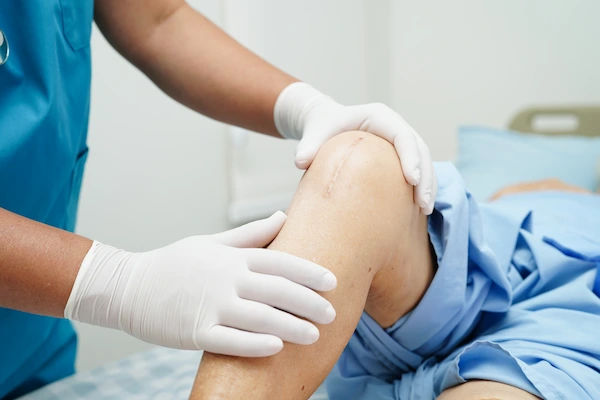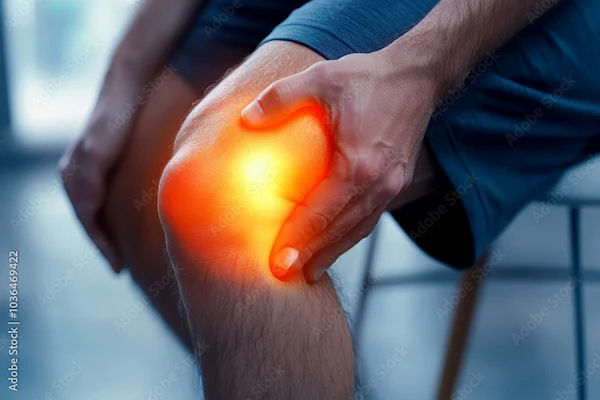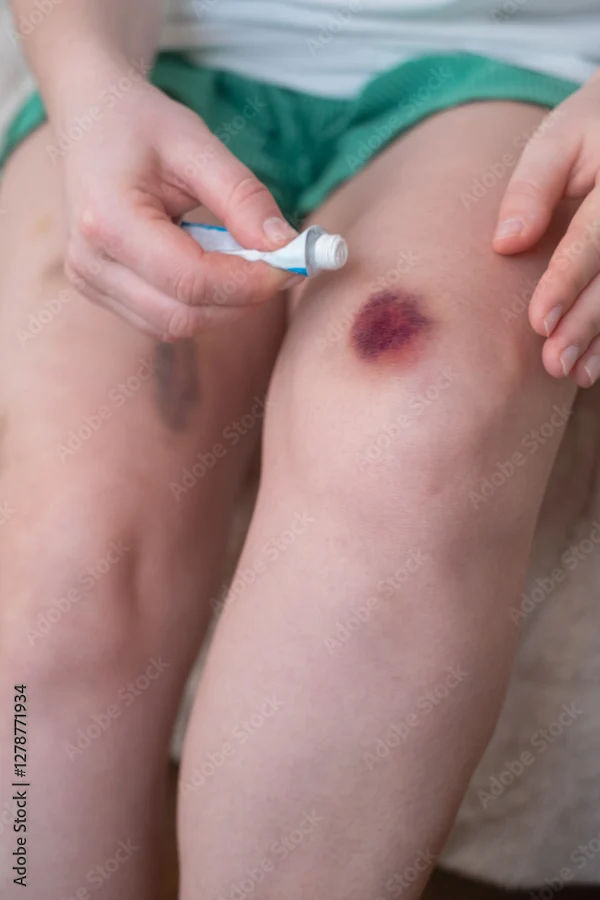Knee Arthritis: Knee Replacement Isn’t the Only Surgical Option
Explore alternative surgical options for knee arthritis beyond knee replacement, including treatments that can relieve pain and improve mobility.


Introduction
Are you living with persistent knee pain, assuming that a total knee replacement is your only surgical hope for relief? You are not alone. For millions suffering from knee arthritis, the prospect of a major joint replacement can be daunting. However, modern orthopaedic medicine has evolved significantly. The crucial message for patients today is that total knee replacement is often a final resort, not a first step.
This guide is designed to empower you with knowledge. We will explore the full landscape of surgical interventions available for knee arthritis, focusing on the numerous alternatives that can alleviate pain, restore function, and delay or even prevent the need for a full replacement. Understanding these options allows you to have an informed, collaborative conversation with your doctor about the best path forward for your unique situation. Let's dive into the world of knee preservation and discover the surgical strategies that might be right for you.
Understanding Your Diagnosis: The Different Types of Knee Arthritis
Before considering any surgery, it's vital to understand the root cause of your knee pain. Arthritis isn't a single disease; it's an umbrella term for joint inflammation. The type of arthritis you have significantly influences which surgical option is most appropriate.
Osteoarthritis: The "Wear-and-Tear" Arthritis
This is the most common form, often related to ageing, genetics, or previous injury. It involves the gradual breakdown of the smooth, protective cartilage that cushions the ends of your bones. As cartilage wears away, bones begin to rub against each other, causing pain, stiffness, and swelling. Surgical alternatives to knee replacement surgery are often most successful when the osteoarthritis is confined to a specific compartment of the knee.
Rheumatoid Arthritis: An Autoimmune Condition
Unlike osteoarthritis, rheumatoid arthritis (RA) is an autoimmune disorder where the body's immune system attacks its own tissues, primarily the synovium (the lining of the joint). This leads to inflammation, which can damage cartilage and bone. Treatment for RA often focuses on medications, but when joint damage becomes severe, surgical options, including minimally invasive knee surgery, may be considered to correct deformities and relieve pain.
Post-Traumatic Arthritis: Following an Injury
This type of arthritis develops after a significant knee injury, such as a fracture, ligament tear (like an ACL tear), or meniscal tear. The initial injury can disrupt the joint's mechanics, leading to uneven wear and tear and the eventual development of arthritis years later. For younger patients with post-traumatic arthritis, joint preservation techniques are a top priority.
Consult an Orthopaedic Surgeon for the best advice
The Foundation of Treatment: Exhausting Non-Surgical Options First
Surgery is never the starting point. A comprehensive treatment plan always begins with conservative, non-surgical measures. If your symptoms do not improve after trying these methods for a sustained period, a doctor can help you explore surgical knee arthritis treatment without replacement.
Physical Therapy and Targeted Exercise
A physical therapist can design a program to strengthen the muscles around your knee (quadriceps and hamstrings), providing better stability and shock absorption. This can significantly reduce pain and improve function. Low-impact activities like swimming and cycling are often recommended.
Medications and Injections for Pain Management
• Medications: Over-the-counter anti-inflammatories (like ibuprofen) can manage pain and swelling.
• Corticosteroid Injections: These powerful anti-inflammatory injections can provide months of relief by reducing swelling within the joint.
• Hyaluronic Acid Injections (Viscosupplementation): These injections supplement the natural lubricating fluid in your knee, potentially reducing pain and improving mobility.
If your condition does not improve after trying these conservative methods, consulting an orthopaedic specialist is the next logical step.
When Surgery Becomes an Option: Exploring the Alternatives to Full Knee Replacement
When non-surgical treatments are no longer effective, and your quality of life is impacted, surgery enters the conversation. Here are the key non-replacement knee operations to discuss with your surgeon.
Arthroscopic Debridement: A "Clean-Up" Procedure
This is a minimally invasive knee surgery where a surgeon inserts a small camera (arthroscope) into the knee joint. Using miniature instruments, they can flush out the joint (lavage) and remove loose pieces of cartilage, bone fragments, or damaged tissue (debridement). It's most effective for patients with mild to moderate osteoarthritis who have mechanical symptoms like "catching" or "locking," but it is not a cure for advanced arthritis.
Osteotomy: Re-aligning the Knee for Younger, Active Patients
An osteotomy is a powerful knee preservation technique ideal for younger, more active patients (often under 60) with arthritis limited to one side of the knee, usually the inner (medial) side. The procedure involves carefully cutting and reshaping either the shinbone (tibia) or thighbone (femur) to shift weight away from the damaged area to the healthier side of the knee. This can relieve pain and delay the need for a replacement for many years, allowing patients to maintain a higher level of activity.
Microfracture Surgery: Encouraging New Cartilage Growth
For small, isolated areas of cartilage damage, surgeons can use a technique called microfracture. They create tiny fractures in the exposed bone surface, which stimulates the body to produce a "repair cartilage" (fibrocartilage). While not as durable as original cartilage, it can effectively fill the defect and relieve pain.
Cartilage Transplantation: A Biological Solution for Focal Damage
For larger areas of cartilage loss, transplantation procedures offer a more robust biological solution. These are advanced forms of cartilage restoration surgery.
Autologous Chondrocyte Implantation (ACI)
This two-step procedure involves first harvesting healthy cartilage cells (chondrocytes) from a non-weight-bearing part of your knee. These cells are grown in a lab for several weeks and then implanted into the damaged area during a second surgery.
Osteochondral Autograft Transplantation (OATS)
This procedure involves transplanting small, cylindrical plugs of healthy bone and cartilage from a less critical area of your knee to the damaged area. It's like moving "plugs" of healthy tissue to fill potholes.
Partial Knee Replacement: The "Halfway" Solution
When arthritis is confined to a single compartment of the knee, a partial knee replacement (or unicompartmental knee replacement) can be an excellent option. Unlike a total knee replacement, which resurfaces all three compartments, a partial replacement only addresses the damaged area. This results in a smaller incision, less bone removal, a quicker recovery, and a knee that often feels more "natural" because the healthy ligaments and cartilage are preserved. The debate of partial vs total knee replacement is a key discussion to have with your surgeon, as patient selection is critical for long-term success.
Making the Decision: How to Choose the Right Surgical Path for You
The choice between these options isn't one-size-fits-all. It's a personalised decision based on several key factors.
Key Factors: Your Age, Activity Level, and Arthritis Severity
• Age and Activity Level: A young, active 45-year-old with a cartilage defect from a sports injury is an ideal candidate for an osteotomy or cartilage transplantation. A less active 75-year-old with widespread bone-on-bone arthritis is likely a better candidate for a total knee replacement.
• Arthritis Severity and Location: The number of knee compartments affected is the single most important factor. Isolated damage opens the door to alternatives; widespread damage narrows the options.
• Weight and Overall Health: Your general health and body weight can influence surgical risk and the long-term success of any procedure, especially an implant.
When Total Knee Replacement is the Best and Necessary Choice
Despite the many alternatives, total knee replacement remains a gold-standard and life-changing procedure for the right candidate. It is typically recommended when:
• You have severe pain that limits everyday activities (walking, climbing stairs).
• You experience significant knee stiffness and swelling that doesn't improve with rest or medication.
• X-rays show advanced arthritis with bone-on-bone contact across multiple compartments of the knee.
• Non-surgical treatments and less invasive surgical options have failed to provide adequate relief.
• For patients in this category, a total knee replacement offers unparalleled pain relief and restoration of function, with modern implants lasting 20 years or more.
Conclusion: Empowering Your Journey to a Pain-Free Life
Navigating the path of knee arthritis treatment can feel overwhelming, but knowledge is your greatest asset. As we've explored, the surgical landscape is rich with options beyond a total knee replacement. From realignment procedures like osteotomy to biological solutions like cartilage transplantation, the goal of modern orthopaedics is to preserve your natural knee for as long as possible.
The most important step you can take is to consult with an experienced orthopaedic surgeon who specialises in knee preservation techniques. They can perform a thorough evaluation, including imaging tests, to determine the exact nature and extent of your arthritis. Armed with the information from this article, you can actively participate in the decision-making process. Remember, the best surgery is the one that is tailored to your specific condition, goals, and lifestyle. Take the first step towards a more active, pain-free life by seeking expert advice.
Consult an Orthopaedic Surgeon for the best advice
Consult an Orthopaedic Surgeon for the best advice

Dr. Pradeep Lucas
Orthopaedician
7 Years • MBBS, Diploma in Orthopaedics, Fellowship in DFSI
Bengaluru
Revival Multispeciality Clinic, Bengaluru

Dr. Mohammed Tanzeem P
Orthopaedician
5 Years • MBBS, MS Orthopaedics
Bengaluru
Apollo Medical Center, Marathahalli, Bengaluru

Dr. Sushruth J
Orthopaedician
5 Years • MBBS, MS (ORTHOPEDICS),Fellowship in Arthroplasty,FRGUHS – Spine surgery,FIFA Diploma in Football Medicine
Bengaluru
Apollo Clinic, JP nagar, Bengaluru

Dr. Vishruta A V
Orthopaedician
5 Years • MBBS MS Orthopaedics
Bengaluru
Apollo Clinic, JP nagar, Bengaluru

Dr. Susheel B
Orthopaedician
13 Years • MBBS, MS, Ortho Fellowship in Trauma ( Germany) Fellowship in Arthroscopy and Arthroplasty ( Switzerland)
Bengaluru
Apollo Medical Center, Marathahalli, Bengaluru
Consult an Orthopaedic Surgeon for the best advice

Dr. Pradeep Lucas
Orthopaedician
7 Years • MBBS, Diploma in Orthopaedics, Fellowship in DFSI
Bengaluru
Revival Multispeciality Clinic, Bengaluru

Dr. Mohammed Tanzeem P
Orthopaedician
5 Years • MBBS, MS Orthopaedics
Bengaluru
Apollo Medical Center, Marathahalli, Bengaluru

Dr. Sushruth J
Orthopaedician
5 Years • MBBS, MS (ORTHOPEDICS),Fellowship in Arthroplasty,FRGUHS – Spine surgery,FIFA Diploma in Football Medicine
Bengaluru
Apollo Clinic, JP nagar, Bengaluru

Dr. Vishruta A V
Orthopaedician
5 Years • MBBS MS Orthopaedics
Bengaluru
Apollo Clinic, JP nagar, Bengaluru

Dr. Susheel B
Orthopaedician
13 Years • MBBS, MS, Ortho Fellowship in Trauma ( Germany) Fellowship in Arthroscopy and Arthroplasty ( Switzerland)
Bengaluru
Apollo Medical Center, Marathahalli, Bengaluru
More articles from knee problems
Frequently Asked Questions
1. What is the main advantage of a partial knee replacement over a total knee replacement?
The main advantages are a smaller incision, less post-operative pain, a quicker recovery, and a more natural feeling knee because the healthy ligaments and cartilage are left intact. It is, however, only suitable if your arthritis is confined to a single compartment.
2. Am I too young for a knee replacement?
This is a common concern. If you are under 60, your surgeon will likely explore all alternatives to knee replacement surgery first, such as osteotomy or cartilage restoration, to delay an implant. The goal is to avoid a replacement in a young patient because it may wear out and require a more complex revision surgery later.
3. How long is the recovery for cartilage restoration surgery like OATS or ACI?
Recovery is typically longer than for a knee replacement. It involves a significant period of non-weight-bearing (using crutches for 6-8 weeks) followed by extensive physical therapy. Full recovery and return to sports can take 6 to 12 months, as it requires time for the new cartilage to integrate and strengthen.
4. Can knee arthritis be reversed with surgery?
Surgery cannot reverse arthritis, but it can effectively manage its symptoms. Procedures like osteotomy and cartilage transplantation are considered 'joint preservation' because they aim to halt the progression of damage and restore function, effectively 'resetting the clock' on your arthritis.
5. What happens if a less invasive surgery doesn't work?
If a procedure like an osteotomy or arthroscopy does not provide lasting relief, it does not preclude you from having a total knee replacement in the future. In many cases, these initial surgeries are successful in buying many pain-free years before a replacement becomes necessary.



